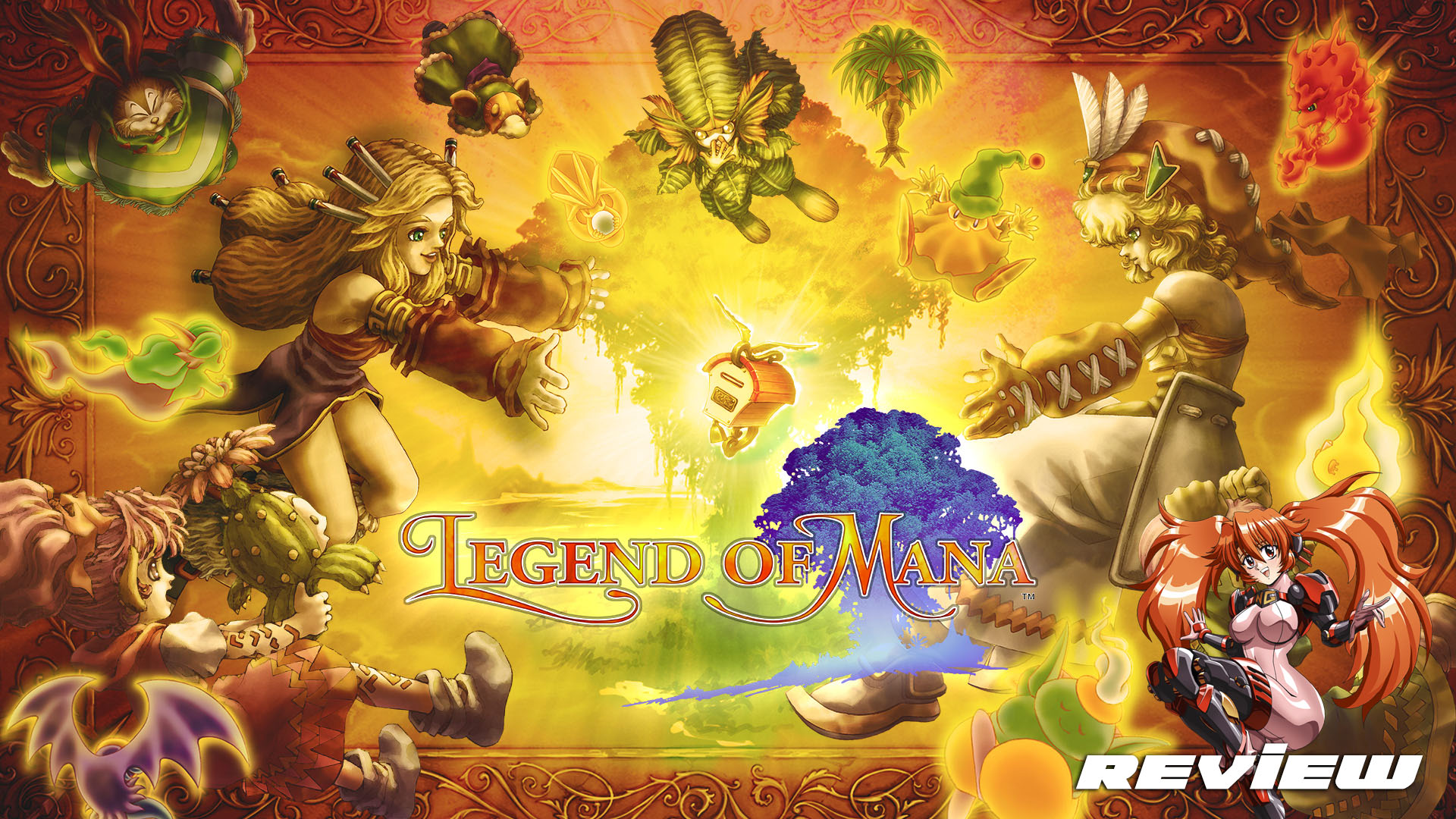
SquareSoft was at their creative peak during their time developing games for the PlayStation in the 1990s. Their experimentation with genres and game design lead to some of their most interesting and visually striking games that to this day, the tremors are still felt. Influences can be seen in endless indie games and SquareSoft’s own competitors, as they have tried to capture the magic that only 90s SquareSoft can manage.
The Mana series has always been a fan favorite, yet it has been something that has very few iterative from other developers. At its core, the franchise has been a high fantasy action RPG with local co-op options, and a narrative that emphasized the importance of ecology. This was always the case with the entries on the Super Famicom/SNES, Secret of Mana and Trials of Mana; the two games most people associate with the series.
During the experimental days of the first PlayStation, SquareSoft decided to follow up on the Mana games with a new sequel that would push the boundaries of sprite art for the genre, and design gameplay that would allow freedom in a style that wouldn’t become standard for over a decade.
At the time, gamers didn’t know what to make of it. Now with M2 handling a remaster, hopefully everyone can appreciate one of SquareSoft’s underrated gems.
This is a review coupled with a supplemental video review. You can watch the video review or read the full review of the game below.
Legend of Mana Remastered
Developer: SquareSoft, M2
Publisher: Square Enix
Platforms: Windows PC, Nintendo Switch, PlayStation 4 (reviewed)
Release Date: June 24th, 2021
Players: 1-2
Price: $29.99 USD
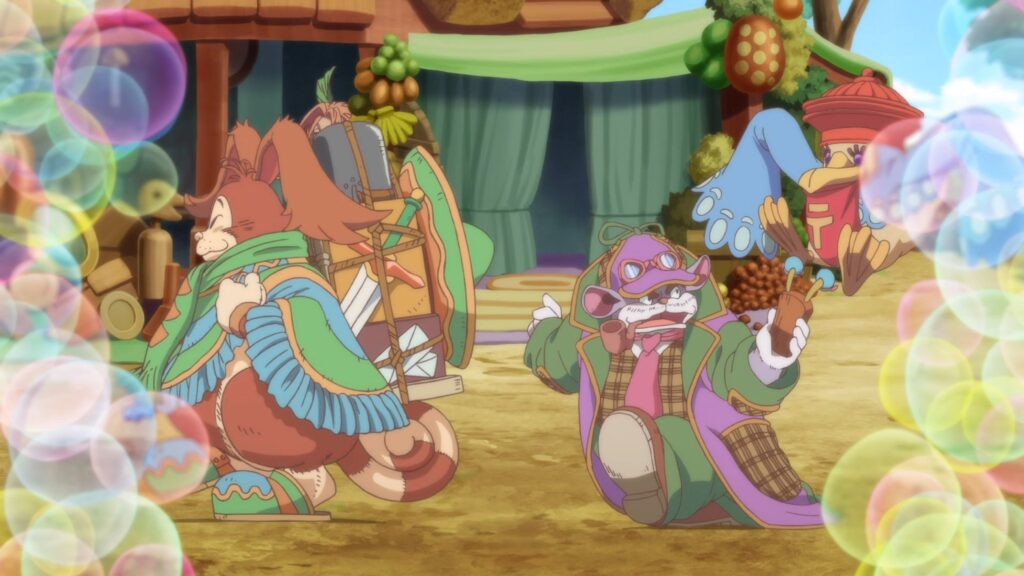
A core pillar of every Mana game is the theme of the environment. This was a series founded on Gaia theory; the idea that the Earth itself and all of its biological mechanisms operate as a single entity. A crucial aspect of this theory is that the planet has a self-correcting feedback loop that keeps the planet and all life on it in check.
Self-correction can take on many forms; whether it is natural disasters or apocalyptic extinction events. Legend of Mana‘s thematic foundation is built upon the death and rebirth of life; an endless harmonized cycle. For some this may lead to an existential crisis, but in Legend of Mana, business goes on as usual.
With themes like this, it could be easy to assume that Legend of Mana will have a heavy and deep story to carry these ideas. Unfortunately, That is not what you are going to get; an overwhelming majority of the experience is doing episodic side-stories within an open-ended setting.
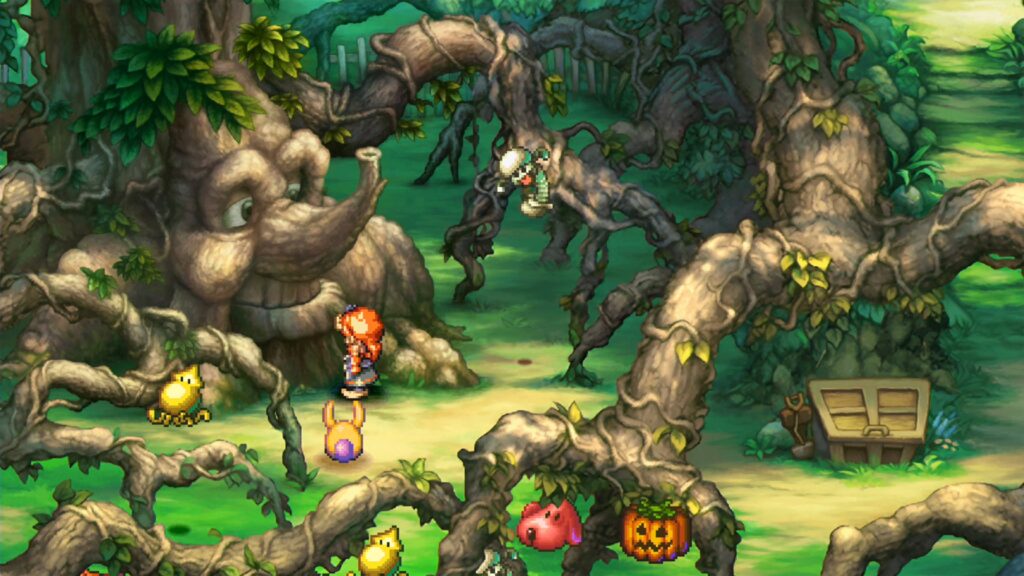
There is a main arc that does follow a traditional narrative structure; a few of them in fact. However, the actual plots are very thin, and it is very likely that most of it will go unseen on the first play through. Legend of Mana can be very cryptic on how it can be played. Event triggers are undefined, and the lack of hand holding makes most of the play time meandering around trying to figure out what to do next.
One of the major arcs centers around a murderous jewel thief and being tasked with tracking down and identifying the culprit. This story has a great climax, but the surrounding events of this scenario are such a small part of the experience which is so much more mundane.
This can lead to some very boring gameplay because there is barely a defined goal. Thankfully the light atmosphere is pleasant, and the setting is beautifully realized. The backdrops have been sharpened and polished up in a big way, showing off how the artists possibly envisioned the world.
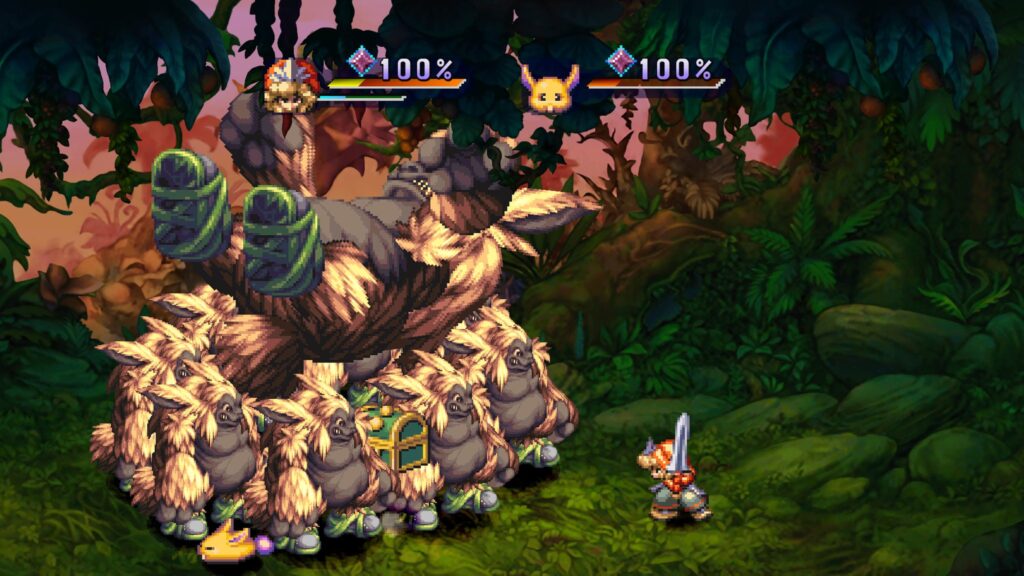
Background art was always a reliable and efficient means to make worlds look and feel believable. Legend of Mana is no exception, and 90s SquareSoft brought in some of the best talent to illustrate the setting.
Everything is so rich and lush with color. The design style is bursting with personality and appealing slopes and angles. Lighting is given great care to make every location feel as inviting as possible. Each backdrop can be stared at for hours to pick apart details, and you might even find yourself wondering how nice it would be to live there.
The drawback to the sharp and remastered background art is that M2 did not fully explore their options, and don’t offer a means to have a pixel art interpretation. The character sprites are numerous and impressively varied, but have been left untouched in their rawest form.

These sprites were designed to be seen on a CRT display so that their pixels would easily bleed together. The harsh edges were not intended, and seeing them in HD goes against the organic aesthetics of the game. This is especially noticeable with the characters juxtaposed against these newly remastered backgrounds.
The crisp and jagged pixelated characters utterly clash and stick out way more than they should in Legend of Mana Remastered. On the original PlayStation version, this was not an issue due to the way all the visuals were unified by the limitations of the hardware.
It’s distracting, but after a while some people may be able to adjust to the incongruence of the assets. Some improvements were made that are welcomed; like the wide screen aspect ration which is taken advantage of for the expansive horizons and lengthy cavernous dungeons.
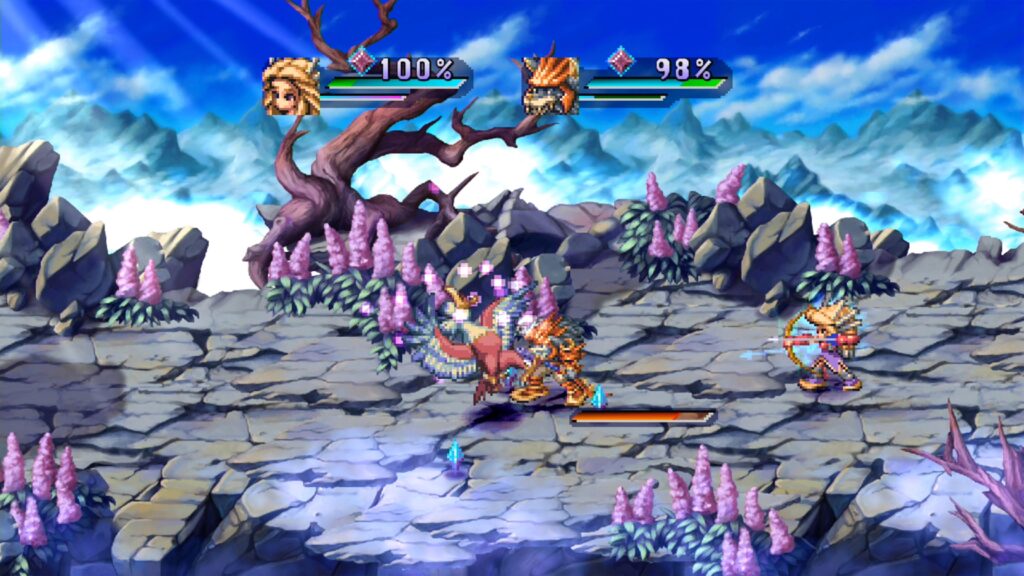
Bosses make a statement with their enormous girth. Their expressive gestures and range of movement makes them seem unpredictable. Even so, they have very long wind-ups which trivialize most of the challenge they could offer.
Most of the time battles are won by exploiting the pathetic enemy AI, and abusing the overly generous stun-locking. Since the animation is not the most fluid, and key frames are lingered on for a fraction of a second more than necessary, it’s so easy to time attacks between i-frames to steam roll through most battles.
Bosses are especially a push-over due to most of them being alone. Basic battles offer a bit more of a fight because encounters tend to have multiple threats, and the player is only able to hit one at a time. Even if several enemies bunch up together; swinging a great sword will only count hits for one of the enemies.
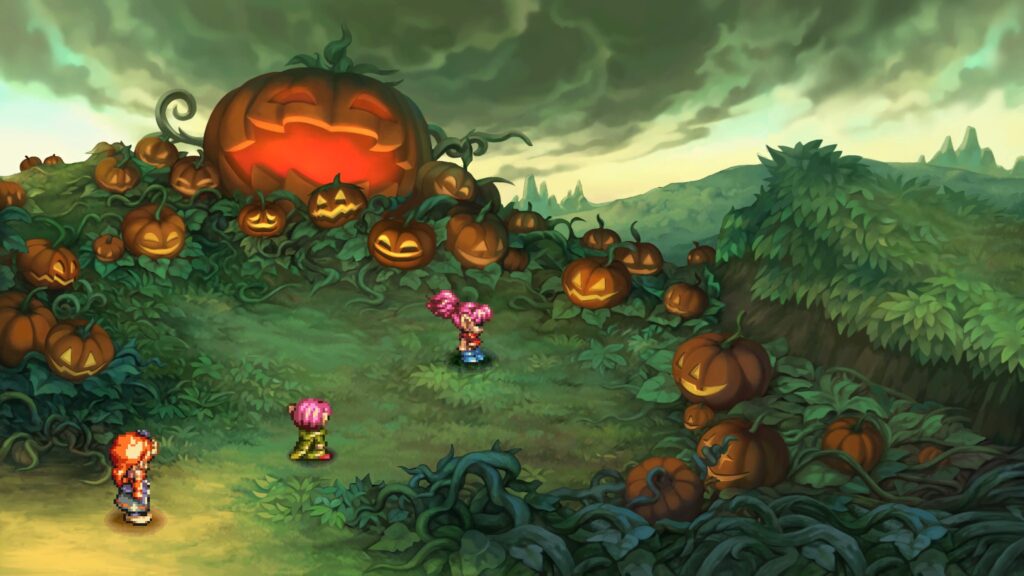
While the aimless adventuring and questing may be kind of dull within a certain mindset, the combat is truly the downfall of Legend of Mana. The fighting is about as complex as the earliest beat ’em ups on 8 and 16-bit consoles; and in most cases is inferior.
Movement is stiff and strikes lack punch when they connect. Evasive maneuvers are extremely limited, because players have to choose prior to battle if they want to have a counter attack, block, or about three to four different kinds of dodge. Only two can be mapped to two of the buttons, and using both slots means losing the ability to jump.
This harsh restriction makes most battles so boring and lifeless. There is so little to do, and most of the time the heroes will simply whale the opposition over the head with the best available weapon. There is no need to play carefully either, since all health is restored after battle, which deflates all tension while exploring.
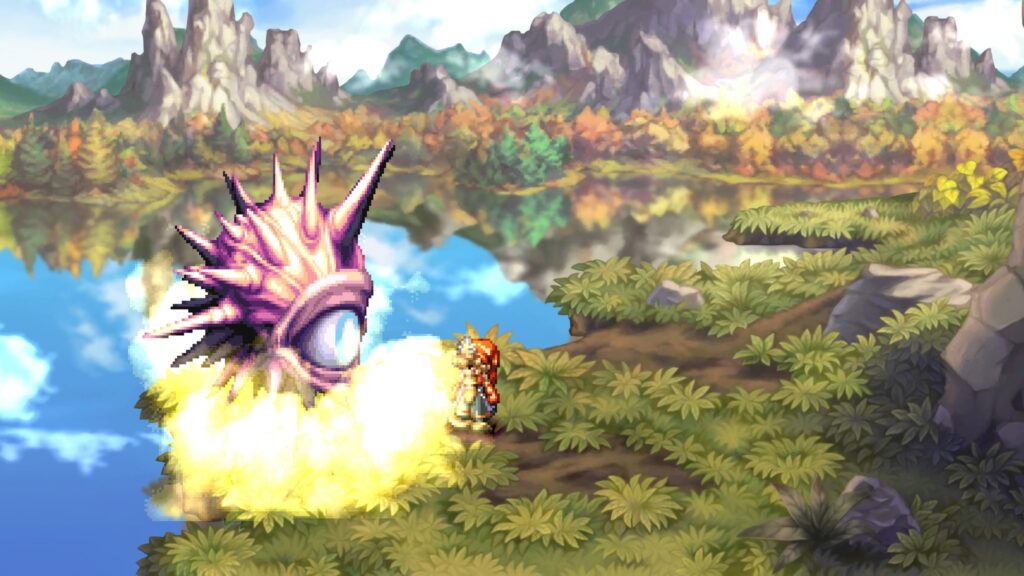
The different weapon types are all worth using, because each one will lead to the protagonist to learn new abilities associated with that specific weapon. This is one of the more thoughtfully designed aspects of the combat, since this encourages players to diversify their play styles.
Sadly, the weapon upgrading system is as convoluted as it ever was back in 1999. When it opens up, the feature is barely explained and the in-game tutorials are unhelpful.
Not that it matters much, since Legend of Mana is already extremely easy, but having a more powerful weapon does help ease the tedium of chipping away a massive boss life-bar. It’s not difficult to make it all the way to the end of a play through and never upgrade a single weapon.

The one saving grace of the comatose combat is that it can be played cooperatively. This does make encounters more exciting, and like karaoke, everything is more fun with friends.
The second player will assume the role of one of the many supporting cast members. This can range from the lovably scummy Niccolo the rabbit who is barely armed, to the axe-wielding beastman Larc.
There are several who become available and rotate as the stories unfold which makes them feel like they are their own person. They have their own lives and the player is just another person in their world, not the other way around.
The is also a light monster raising sim mechanic that was borderline useless in the original release, but thanks to the restoration of the mini game Ring Ring Land, players can raise extremely powerful allies from an egg. The mini game itself is mostly pure blind luck, and is nothing interesting, but fans of Legend of Mana who never owned a pocketstation will be able to cross this one off their bucket list.
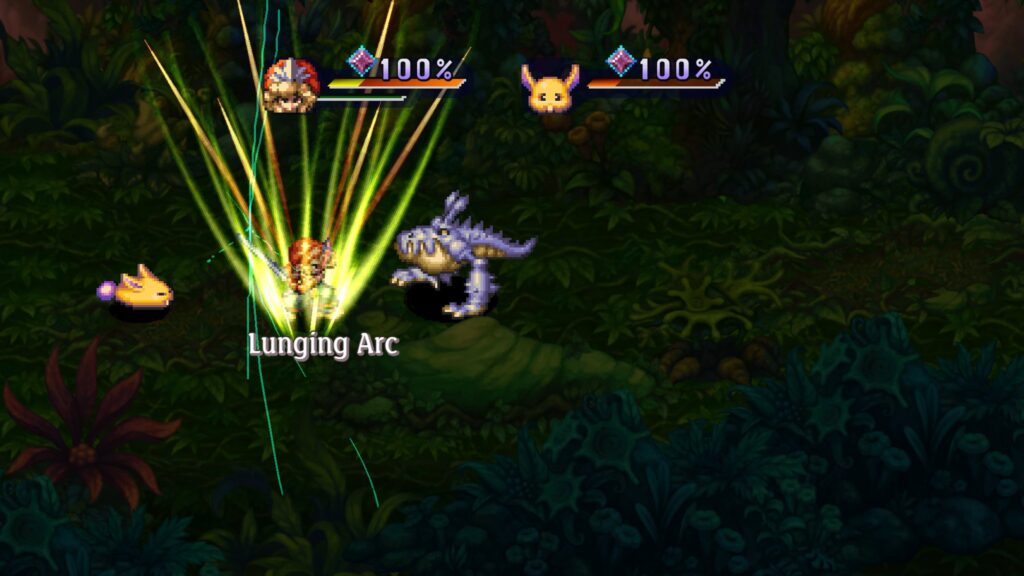
Meeting these characters and participating in their stories is a bulk of what makes Legend of Mana. A lot of the time it feels like different episodes of slices of life within a fantasy setting.
Since the game’s structure is so free form and there are consequences for making certain decisions in a specific order, it is unlikely to experience what Legend of Mana has to offer in a single play through.
This is a game built around new game plus, and doing things differently to try different outcomes. This makes replay value high, but you already have to have an acquired taste to appreciate what this game has to offer.
Yoko Shimomura brings the boys to the yard as always with her impeccable music. Legend of Mana might be her best work, and shows a large range of styles and emotions with her compositions. The town music feels very homey and inviting. Getting into boss battles sounds the electric guitars and fast shredding to inspire aggression.
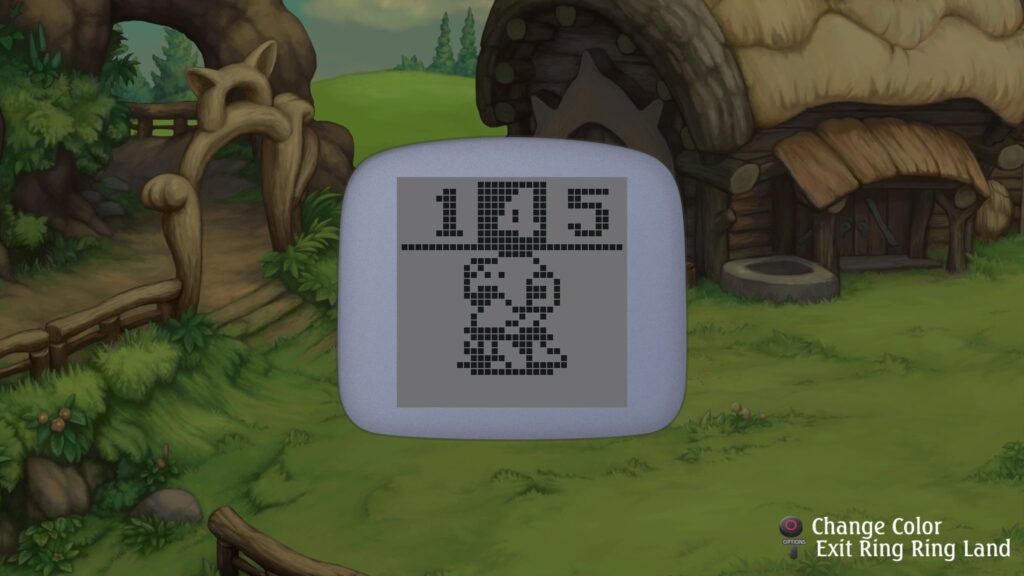
The main theme is especially memorable, and has some cues that seem like they would be the basis for what Shimomura would go on to create for Kingdom Hearts. Both the original PlayStation arrangement and a new remastered score is present. While the remastered music sounds quite good, anyone who grew up with Legend of Mana, is going to prefer the original sound’s warmth.
M2 did the best they could with Legend of Mana Remastered. The original game was far from perfect, and this new version’s visuals may not sit well with everyone, but the QoL features like saving anywhere and Ring Ring Land being saved makes some of the concessions worth it. Turning off basic encounters is an option too, but what this remaster needed was a mini-map for the maze-like dungeons that recycle the same few background assets.
Legend of Mana Remastered is a decent entry level action RPG for children thanks to its easy combat and seemingly wholesome setting. The various dialects characters speak in make for amusing reading with kids and the simple co-op action is easily understood. Since the plot is so light and focuses on short sub-stories, the scenarios are easily followed and digestible.
Legend of Mana Remastered was reviewed on PlayStation 4 Pro using a review code provided by Square Enix. You can find additional information about Niche Gamer’s review/ethics policy here.